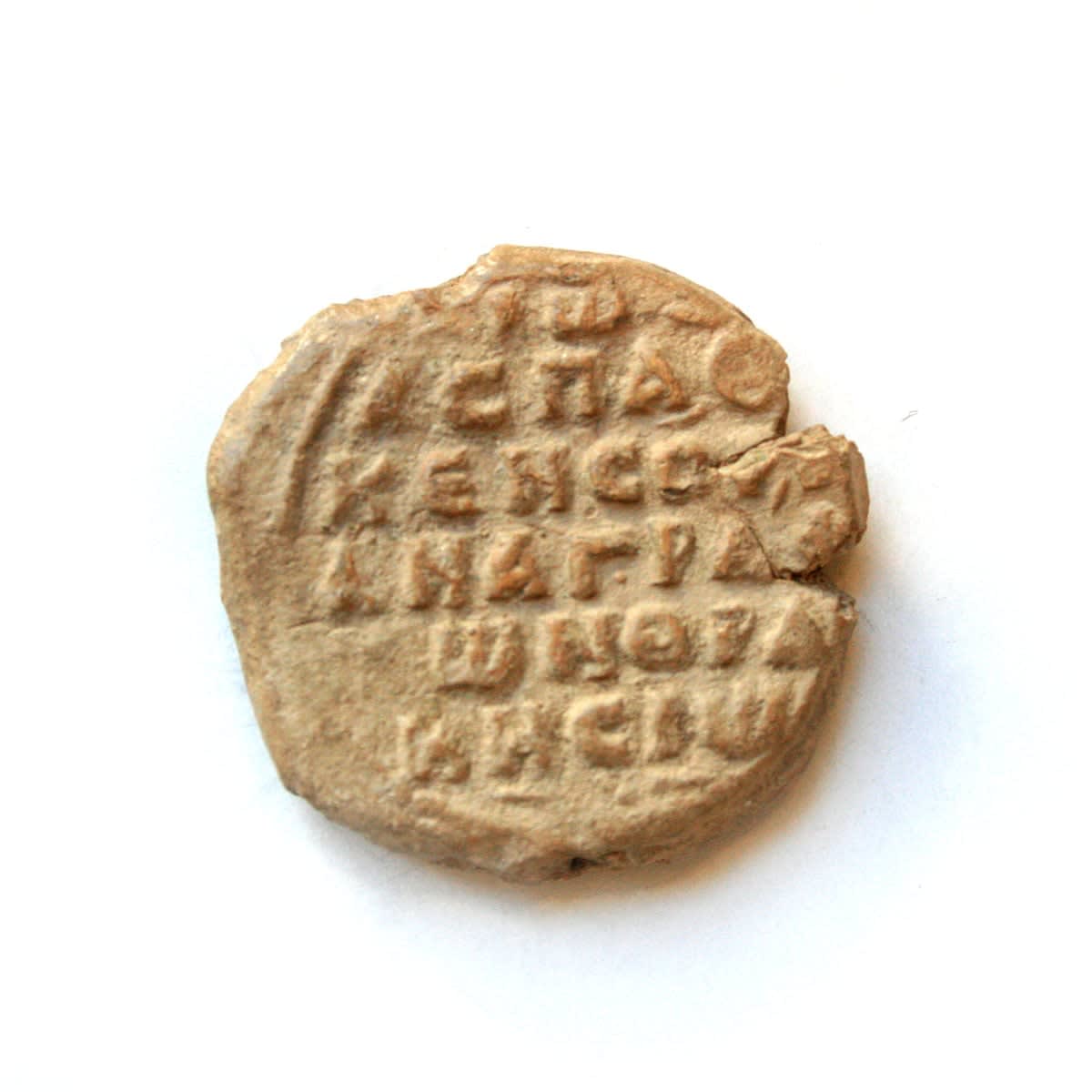Byzantine Lead Bullae, 8th Century CE - 10th Century CE
Lead
height 3.2 cm
height 1 1/4 in
height 1 1/4 in
C.0736
Obverse, depicts two facing, draped busts, both with halo; reverse, six lines of Greek script as follows, some now eligible [_ _ /_C??T/???C?_/???G??/ ?????/_C???]. During the Byzantine period, lead bullae...
Obverse, depicts two facing, draped busts, both with halo; reverse, six lines of Greek script as follows, some now eligible [_ _ /_C??T/???C?_/???G??/
?????/_C???].
During the Byzantine period, lead bullae (singular, Bulla) were widely used to seal and identify the sender of correspondence and containers in shipment. After the cord was wrapped around the package or document and the ends inserted in a channel in the blank seal, the seal was placed between the disc-shaped engraved dies on the jaws of a boulloterion, a pair of pliers of sorts used to impress the design. The boulloterion had a projection above the jaws, which was struck with a hammer to impress the design on the seal and close the channel around the two ends of the cord. With the bulla in place a container cannot be violated without visible damage to either the bulla or the cord, ensuring the contents remain tamper-proof until they reach their destination.
?????/_C???].
During the Byzantine period, lead bullae (singular, Bulla) were widely used to seal and identify the sender of correspondence and containers in shipment. After the cord was wrapped around the package or document and the ends inserted in a channel in the blank seal, the seal was placed between the disc-shaped engraved dies on the jaws of a boulloterion, a pair of pliers of sorts used to impress the design. The boulloterion had a projection above the jaws, which was struck with a hammer to impress the design on the seal and close the channel around the two ends of the cord. With the bulla in place a container cannot be violated without visible damage to either the bulla or the cord, ensuring the contents remain tamper-proof until they reach their destination.



